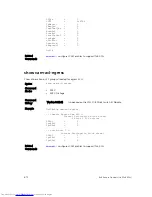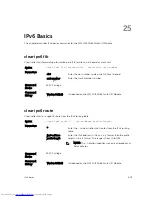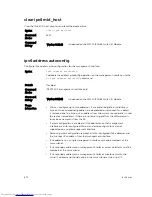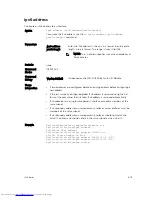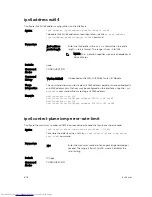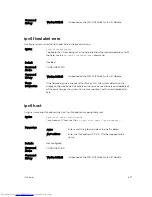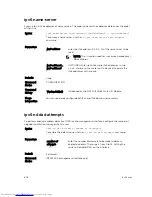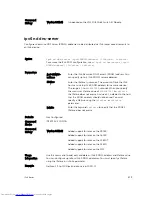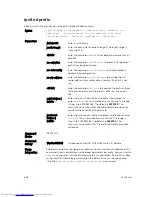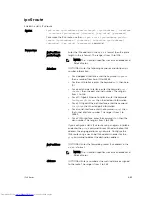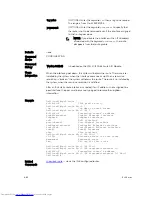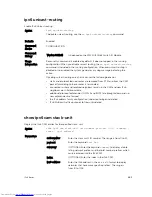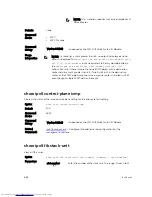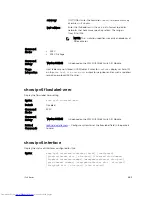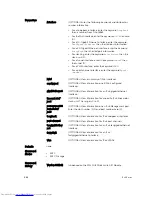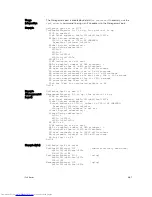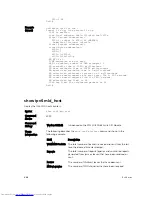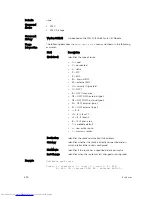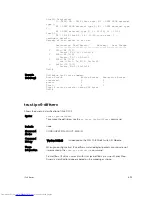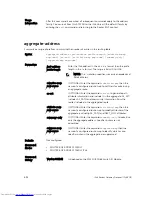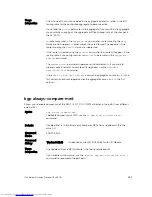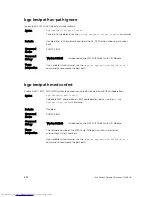
ipv6 route
Establish a static IPv6 route.
Syntax
ipv6 route
ipv6-address prefix-length
{
ipv6-address
|
interface
|
interface ipv6-address
} [
distance
] [tag
value
] [permanent]
To remove the IPv6 route, use the
no ipv6 route
ipv6-address prefix-
length
{
ipv6-address
|
interface
|
interface ipv6-address
}
[
distance
] [tag
value
] [permanent]
command.
Parameters
ipv6-address
prefix-length
Enter the IPv6 address in the x:x:x:x::x format then the prefix
length in the /x format. The range is from /0 to /128.
NOTE: The :: notation specifies successive hexadecimal
fields of zeros.
interface
(OPTIONAL) Enter the following keywords and slot/port or
number information:
• For a loopback interface, enter the keyword
loopback
then a number from zero (0) to 16383.
• For the null interface, enter the keyword
null
then zero
(0).
• For a port channel interface, enter the keyword
port-
channel
then the port channel number. The range is
from 1 to 128.
• For a 10-Gigabit Ethernet interface, enter the keyword
TenGigabitEthernet
then the slot/port information.
• For a 40-Gigabit Ethernet interface, enter the keyword
fortyGigE
then the slot/port information.
• For a tunnel interface, enter the keyword
tunnel
then
the tunnel interface number. The range is from 1 to
16383.
• For a VLAN interface, enter the keyword
VLAN
then the
vlan number. The range is from 1 to 4094.
If you configure a static IPv6 route using an egress interface
and enter the
ping
command to reach the destination IPv6
address, the ping operation may not work. Configure the
IPv6 route using a next-hop IPv6 address in order for the
ping
command to detect the destination address.
ipv6-address
(OPTIONAL) Enter the forwarding router IPv6 address in the
x:x:x:x::x format.
NOTE: The :: notation specifies successive hexadecimal
fields of zeros.
distance
(OPTIONAL) Enter a number as the metric distance assigned
to the route. The range is from 1 to 255.
IPv6 Basics
681






